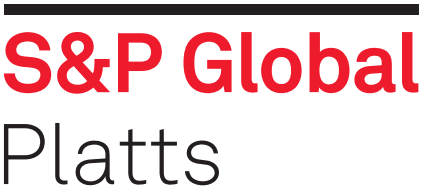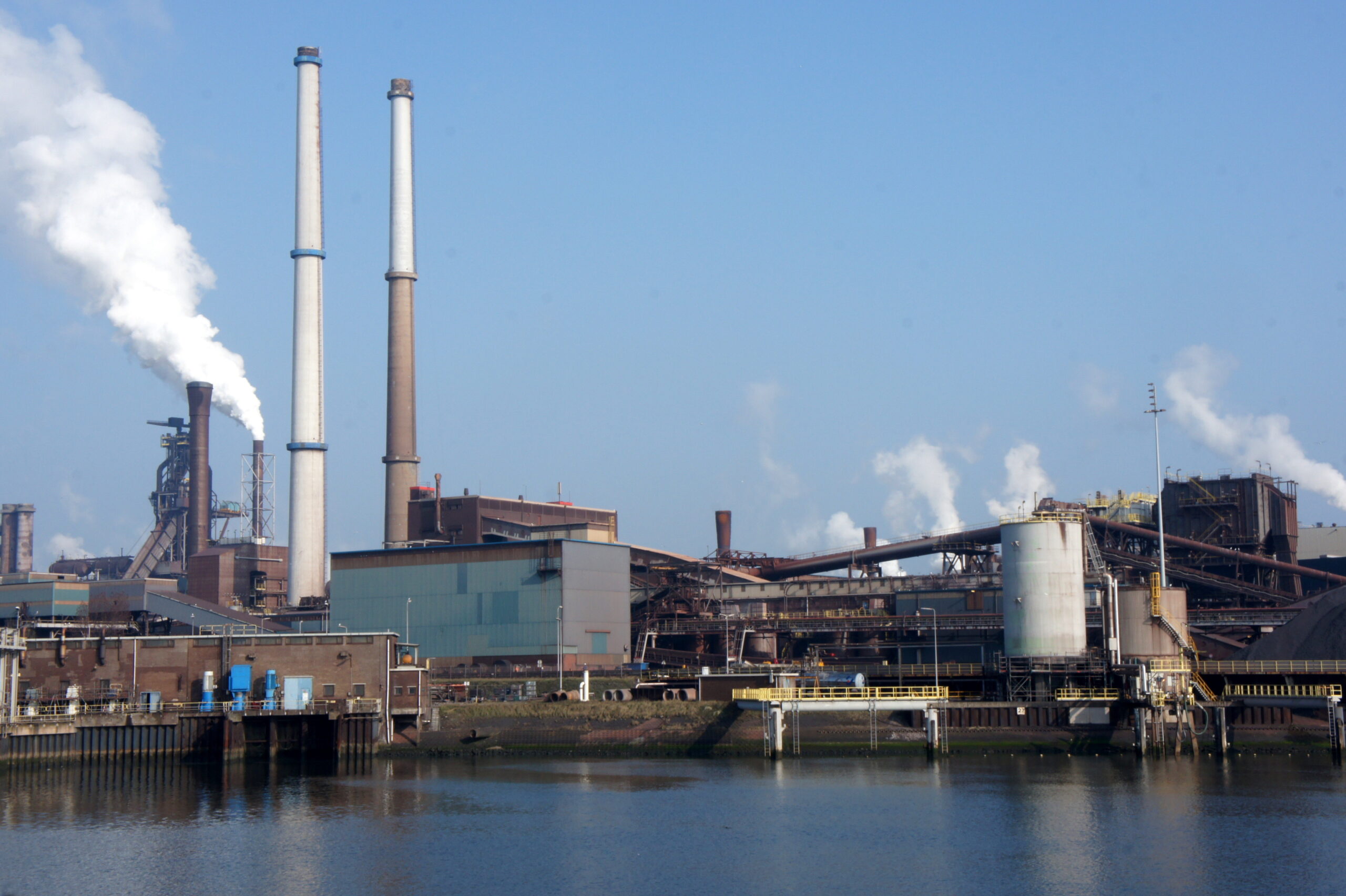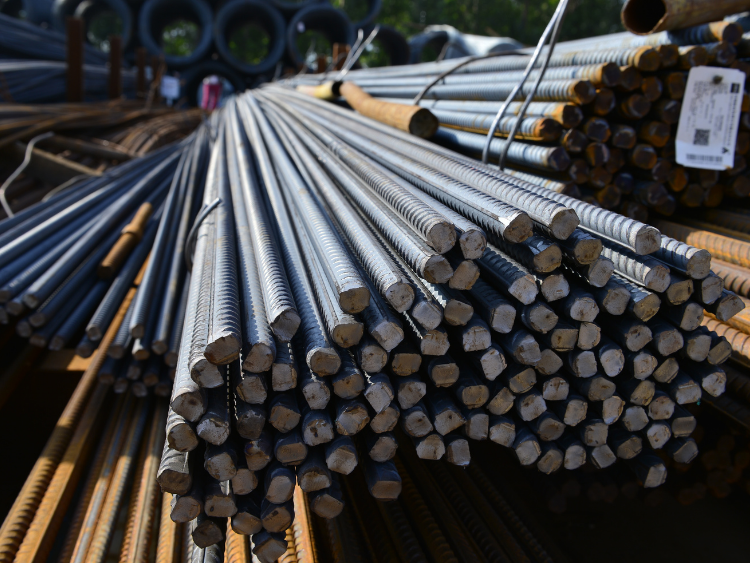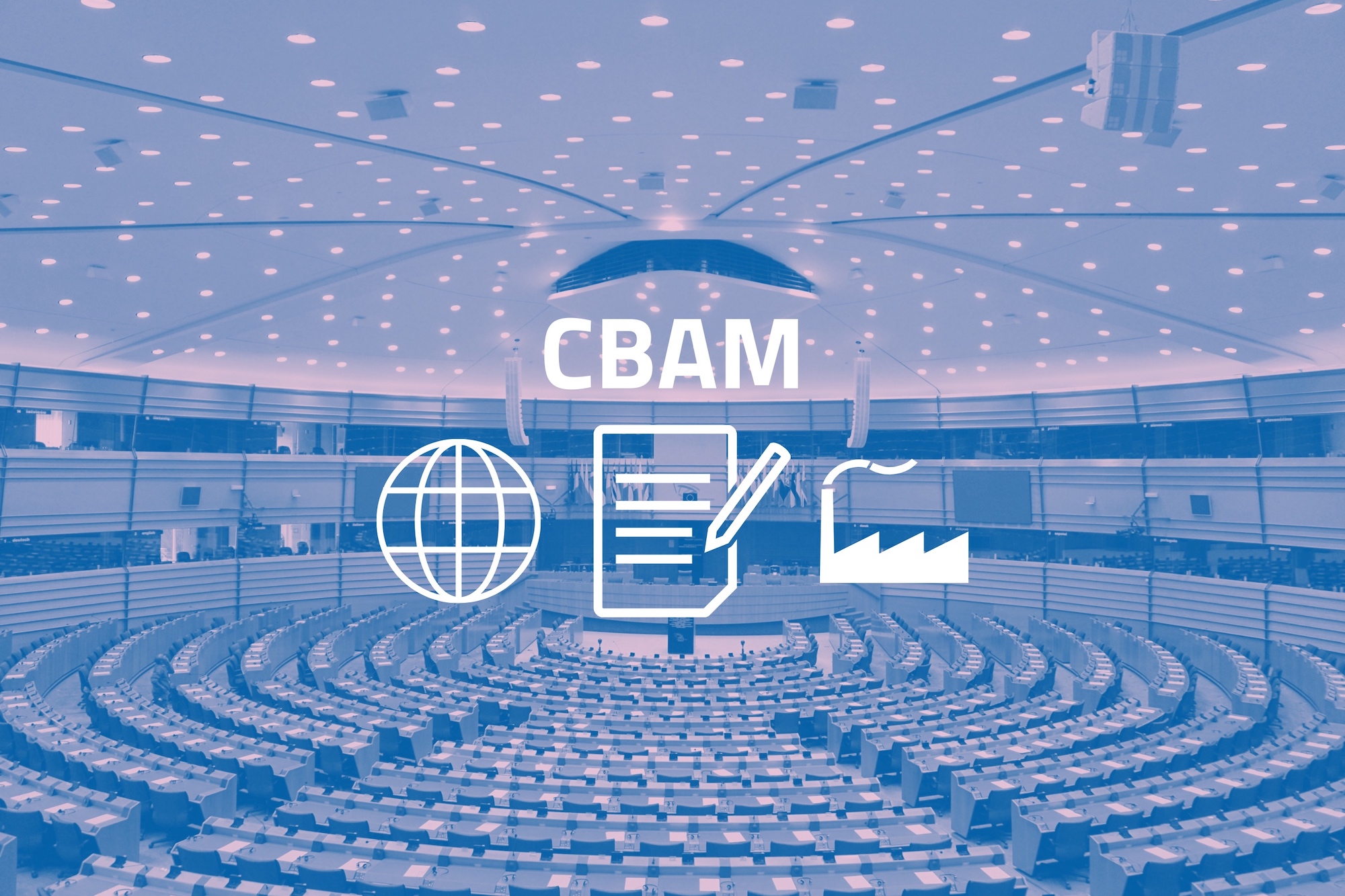
Price gap of ‘green’ and ‘gray’ steel to close steadily until mid-2030s: Thyssenkrupp
Prices of reduced carbon emission steel and conventional steel will continuously align until the 2030s, Thyssenkrupp CEO Miguel Ángel López Borrego said Feb. 2.
At a public shareholder meeting, Lopez said that customers of the German steel unit of Thyssenkrupp would understand that prices of lower carbon emission steel would be at a premium, particularly once it will be produced with green hydrogen.
“However, also gray steel will become more expensive with rising carbon costs,” Lopez said.
Platts assessed the current premium of carbon-accounted HRC at Eur140/mt Feb. 2., up Eur15/mt day on day.
One of the main costs will be green hydrogen, and the company aims to run its new direct-reduced iron plant, which will replace one blast furnace, to be fully run by green hydrogen by 2029. Thyssenkrupp will finalize tenders for the supply this year. Lopez added that he expects Thyssenkrupp to form more joint ventures for hydrogen in the years to come.
Steel JV talks progressing
Shareholders of Thyssenkrupp, which owns Germany’s biggest steelmaker, Thyssenkrupp Steel, questioned the availability of energy for the decarbonization of the steel operations.
“The energy question is the key question,” Lopez said. “That’s why we are favoring a JV with EPH.”
He said that the current favorite option for the steel unit would be a joint venture with Czech energy provider EPH owned by Czech billionaire Daniel Kretinsky. He refused to elaborate on the ongoing talks despite requests by multiple shareholders at the event.
Lopez also said Thyssenkrupp would still be looking at a plan B if the JV would fail but said he would not expand on the alternative.
Thyssenkrupp will be spinning off its steel unit no matter of more government funding to decarbonize the steel industry. The tinplate plant Rasselstein will also be part of the steel JV. The company will invest Eur3 billion in the decarbonization of the steel unit, which includes the support of Eur2 billion from the German government.
The Thyssenkrupp steel mill accounts for 2.5% of Germany’s entire CO2 emissions.
Previous attempts at deals
Thyssenkrupp has had several failed attempts at previous JVs or sales of the struggling steel unit. It ended talks in 2021 about selling its steel unit to Liberty Steel, saying “ideas about the corporate value and the structure of the transaction were far apart” and would drive forward a “sustainable position” for steel on its own.
Prior to that, a steel joint venture with Tata Steel Europe was called off in 2019 following the blocking of the plan by the European Commission without further divestments.
In the fiscal year 2022-23 (Oct 2022-September 2023), Steel Europe shipped 9.4 million mt of steel, down from 9.5 million mt the previous year, while lower spot steel prices caused sales to fall 6% year on year to Eur12.4 billion. In particular, high raw material and energy costs in the first half of the year affected earnings.
Author: Laura Varriale, laura.varriale@spglobal.com


European buyers avoid HRC deals on sufficient stocks
European domestic hot-rolled coil prices remained fairly stable on Feb. 2 as buyers limited purchase volumes due to high inventory levels.
“A lot of import has arrived in Europe and volumes booked earlier from European mills have also arrived,” a service center source said. “As stocks have gone up, the buyers are not willing to accept higher prices.”
Market participants also remained hesitant about near-term price trend due to lack of real demand and improved supplies as steelmakers restart idled blast furnaces.
Deals have been reported at Eur750-760/mt ex-works Ruhr. Tradable values were reported at Eur730-770/mt ex-works Ruhr.
Platts assessed the price of domestic hot-rolled coil in Northwest Europe down Eur5/mt on the day at Eur755/mt ex-works Ruhr Feb. 2.
Interest in imported material remained muted, which aided domestic sentiment.
“Nobody is keen to buy import due to long lead times,” a trader said. “Further delays caused by the geopolitical issues at the Black Sea and concerns regarding safeguard quotas are also decreasing demand for imports.”
Offers for imported HRC were heard at Eur710/mt CIF Antwerp from Asia.
Platts assessed the price of imported HRC in Northwest Europe down Eur20/mt on the day to Eur660/mt CIF Antwerp Feb. 2.
In South Europe, deals for HRC were heard at Eur750/mt ex-works Italy and offers were heard at Eur750/mt ex-works Italy. Tradable values were estimated at Eur750-770/mt delivered Italy.
Platts assessed the price of domestic HRC in South Europe stable on the day at Eur750/mt ex-works Italy Feb. 2.
Imported HRC offers were heard at Eur630-680/mt CIF Italy from Asian mills. Turkish mills made offers at above Eur700/mt ex-works Italy, including anti-dumping duties.
Platts assessed the price of imported HRC in South Europe stable on the day at Eur675/mt CIF Italy Feb. 2.

EU carbon values under pressure on recession, demand worries
Sentiment in the European carbon price market remained bearish in the week to Feb. 2 amid muted demand. Traders and analysts have said they expect prices to remain around Eur60-65/mtCO2e in the coming week, with macroeconomic concerns and reduced power generation dominating headlines.
EU Allowances under the bloc’s Emissions Trading System were trading at Eur63.22/mtCO2e at 1038 GMT on Feb. 2 compared with Eur63.58/mtCO2e on Jan. 26.
Platts, part of S&P Global Commodity Insights, assessed EUA contracts for December delivery at Eur62.19/mtCO2e on Feb. 1.
Many analysts have downwardly revised their EUA price forecast for 2024 due to recession concerns and reduced emissions from the power and industrial sectors.
Analysts at S&P Global expect 2024 average prices to plunge to Eur63.90/mtCO2e compared with Eur85.30/mtCO2e in 2023 and Eur81.50/mtCO2e in 2022.
“EUA prices are expected to decline further due to the expectation of a technical recession despite a resilient labor market,” they said in a recent note. “The slowdown is broad-based affecting sectors like construction, manufacturing, and services. We expect prices to hit the high Eur50/mt mark threshold in February.”
Climate reforms
On Feb. 6, the European Commission is likely to recommend that the EU commit to a 90% reduction in emissions by 2040, which could provide some relief to declining prices.
This target is being backed by several EU countries, but climate policies have become heavily politicized recently, with farmers across Europe currently protesting against costly clean energy regulations.
But many policymakers, analysts and climate scientists insist that the EU must commit to this if it has any realistic chance of reaching net zero by 2050.
The European Council has set a goal for the EU to cut its greenhouse gas emissions by at least 55% by 2030, compared with 1990, and become climate neutral by 2050.
Meanwhile, the inclusion of the maritime sector in the EU ETS, opens up a new set of buyers for EUAs.
The European Commission published a document Jan. 31 attributing each shipping company to an EU member state to help these companies register for EU ETS compliance.
Shipping companies can now open holding accounts to trade EUAs and manage their ETS exposure.
Under the EU ETS guidelines, shipping companies must surrender their first ETS allowances by Sept. 30, 2025, for emissions reported in 2024.
The EU has also agreed on a phase-in period to give the industry some preparation time, with the ETS covering 40% of the emissions in 2024, 70% in 2025 and 100% from 2026 onward.
The shipping sector’s inclusion is projected to add emissions of 90 million mtCO2e this year, which is around two-thirds of the sector’s emissions.
CBAM extension
Meanwhile, the European Commission extended has the period for declarants to submit their quarterly reports under the Carbon Border Adjustment Mechanism by 30 days from the original deadline, after a significant number of importers experienced technical issues that led to some businesses being unable to make submissions.
The new carbon border tax entered into application in a transitional phase Oct. 1, with the first reporting period for importers originally set to end Jan. 31.
CBAM essentially levies a tax on imports of selected carbon intensive materials and products (including aluminum, cement, electricity, fertilizers, hydrogen, iron and steel) into the EU, removing the gap between the EU ETS carbon price and the export country of origin’s carbon price.
The main purpose of the tax is to reduce the risk of carbon leakage — as a result of EU industries locating abroad — and encourage importer nations to introduce their own carbon markets and, so, limit CBAM impacts on their traded goods.
No penalties will be imposed on reporting declarants experiencing difficulties in submitting their first CBAM report, the commission said.
“While the system has been working well in previous days with data and many reports being submitted successfully, technical teams are working around the clock to rectify remaining issues,” the EC said.
The commission has encouraged those reporting declarants that do not encounter any major technical issues to submit their CBAM report by the end of the reporting period.
Author: Eklavya Gupte, eklavya.gupte@spglobal.com

365 Days of Steel: exploring the endless tapestry of Steel in Construction, Design and Art
The book ‘365 days of steel’ takes readers through the fascinating history of steel in construction, design & art.
Over the past 140 years, architects, engineers, designers and sculptors have exploited the qualities of this unique material in their projects. Strong yet light, sometimes imposing but just as often light-footed, steel offers a designer endless possibilities. From Richard Serra’s sculptures and Charlotte Perriand’s furniture to Daniel Burnham’s first skyscrapers and Calatrava’s elegant bridges: all are wonderful examples of the versatility of steel.
This richly illustrated book invites you on a 365-day journey full of inspiring examples and interesting anecdotes about well-known and lesser-known projects. This book is an asset for anyone who would like to know more about the many reasons why designers have enthusiastically embraced and applied steel.


‘365 days of steel’
Author: Bruno Dursin
The book is the logical consequence of 365 posts on LinkedIn shared from 9 April 2022 to 8 April 2023.
For a year, every day one page on the application of steel in construction, design & art. Each of those examples show the versatility of this wonderful material that offers endless possibilities. I hope readers will be equally fascinated and amazed by how architects, engineers, designers and artists have gone about working with steel.
The book will be out on 8 March 2024 and costs €49 (incl. VAT) + €9.50 postage (within Europe).
where to buy?

CBAM complications, safeguard hinder steel activity: Assofermet
The normative framework of the EU Carbon Border Adjustment Mechanism (CBAM) and safeguards on steel imports is hindering the daily activity of Italian and European steel companies, says Italian steel trade association Assofermet.
The challenges in filling CBAM reports, the economic repercussions expected from the mechanism starting in 2026, as well the safeguard measures in force from 2018 are a deep concern for Assofermet’s many members.
The European Commission (EC)’s Directorate General for Trade and the Directorate General for Taxation and Customs Union asked the association to highlight the critical issues of the mechanism to help with drafting the final version. “It has been assured that our perspective will be taken into account, especially for the future evolution of CBAM … Agreeing that CBAM will also generate increased costs for downstream end-users in the steel supply chain, it was pointed out to the Commission that if certain finished products … are not included in the mechanism, the European industry will lose competitiveness, given its global role,” Assofermet warns in a note sent to Kallanish.
The association notes an open-minded attitude from Italian authorities to listen to the problems of the entire steel supply chain stemming from regulations and willingness to continue dialogue on the regulatory framework. While the first quarterly report deadline for CBAM has passed, the safeguard on steel imports is currently set to expire at the end of June 2024. “There are no official updates yet on a possible extension after the first half of this year,” Assofermet concludes.
31 January was the deadline for importers to submit their first report detailing emissions as part of CBAM. The European Commission nevertheless announced this week that due to a technical incident, it is offering the possibility to request for a 30-day delay for submission (see Kallanish passim).
During the ongoing transitional phase of CBAM, European importers of steel need to file quarterly reports in the European Commission system, starting from those for the fourth quarter of 2023. During the transitional period, importers are required to report on the quantity of imported goods and resulting direct and indirect emissions. No payments will be due. The transitional phase is planned to conclude at the end of 2025.
Natalia Capra France


Tata Steel relights BF in IJmuiden
Tata Steel’s BF6 was idled late in March 2023 for maintenance work. The restart, however, was postponed several times because of “technical issues.”
“[The relining of BF6] is a large project and has a number of third-party dependencies in terms of services and equipment,” a Tata Steel spokesperson said on October 23. “As a result of certain delays and delivery issues from third parties, we have had to make changes to the schedule of the project.”
The furnace has now been finally reignited, however.
“A few days ago,” the spokesperson said on January 31, “we began the start-up process on BF6. Step by step, we are working toward a full ramp-up in the production of hot pig iron.”
Several sources familiar with the matter said that the BF in IJmuiden was restarted on January 29.
The IJmuiden steelworks can produce 6 million tonnes per year of pig iron from two BFs. BF6 has capacity for 2.5 million tpy of that total volume.
Tata Steel IJmuiden has capacity for 7.5 million tpy of crude steel, according to Fastmarkets’ company information. The site produces hot-rolled, cold-rolled, hot-dipped galvanized and pre-painted coils as well as tin-plated products.
Market concerns
Market sources were worried that, if more steelmaking capacities were brought back online in the first quarter of 2024, this might hamper the fragile uptrend in the EU flat steel market.
Prices for flat steel in Europe have been picking up in January, primarily driven by reduced supply resulting from output cuts and some limited restocking activity, although end-user demand remained low.
“The acute price rise [in HRC] is entirely supply-driven,” a source in Northern Europe said.
Fastmarkets calculated its daily steel hot-rolled coil index, domestic, exw Northern Europe, at €760.63 ($824.13) per tonne on January 31, up by €3.75 per tonne from €756.88 per tonne on January 30.
The index was also up by €13.96 per tonne week on week and by €65.13 per tonne month on month.
Earlier this month, Salzgitter restarted its BF “A” at Flachstahl in Germany after a four-month outage.

Published by: Julia Bolotova


German states form ‘Stahlallianz’, demand safeguard extension
Representatives of the 11 German states home to steel mills met on Monday with federal economy minister Robert Habeck in Berlin to found a new national steel initiative.
The so-called ”Stahlallianz” intends to combine the common interests of the states, most of them represented by their minister presidents, in order to form one voice to the federal government. They are essentially asking the government for strong support for the domestic steel industry, in view of future investment prospects.
In its statement, the alliance highlights European safeguard measures against imports as a key theme. It asks the German government to advocate at EU level for an extension until mid-2026, “to prevent a diversion of trade routes that distorts competition”.
At the national level, the partner states address high costs for power and the resulting disadvantages in international competition. They approve the Berlin government’s decision to lower the electricity tax for manufacturing industries, but caution this is not sufficient. They maintain their demand, for example, for a stabilisation of grid fees and a period of bridge financing of electricity for power-intensive industries (see Kallanish passim).
Another main theme is the technical transition following last year’s court decision that blocked €60 billion ($66 billion) in reserve funds from the Covid period from being used to de-carbonise industrial processes. In that context, the alliance highlights the importance of medium-sized companies along the production chain, which must not be overlooked for public support. That point was earnestly addressed earlier by WSM, the federation of steel-using industries.
The alliance consists of Baden-Württemberg, Bavaria, Brandenburg, Bremen, Hamburg, Lower Saxony, North Rhine Westphalia, Saarland, Saxony, Sachsen-Anhalt and Thuringia.
Christian Koehl Germany


Thyssenkrupp Materials Services liefert mit Wasserstoff aus
Seit Januar 2024 nutzt Thyssenkrupp Materials Services die ersten wasserstoffbetriebenen LKW, um seine Kunden zu beliefern. Für das Tochterunternehmen Thyssenkrupp Plastics sind seit Jahresbeginn zwei neue Fahrzeuge des Logistikpartners ep-Gorup mit dem umweltfreundlichen Antrieb im Einsatz.
Das Erscheinungsbild des 15-Tonners ist auf dem ersten Blick vergleichbar mit einem Diesel-Fahrzeug. Doch die Perspektive von oben auf die Sattelzugmaschine lässt erkennen: Hier steigt Wasserdampf statt Abgas in die Luft. Der Dampf entsteht in einer Brennstoffzelle, die aus Wasserstoff den Strom für den Elektroantrieb erzeugt und damit eine Alternative zum herkömmlichen Verbrennungsmotor bietet.
Zu erkennen sind die beiden LKW durch ihre gestaltete Plane, die auf die Nutzung von Wasserstoff hinweist. Bei einer jährlichen Laufleistung von rund 76.000 Kilometern beträgt die CO2-Einsparung eines einzelnen LKW laut Thyssenkrupp bis zu 40 Tonnen CO2 pro Jahr.
Thyssenkrupp Materials Services prüft verschiedene Antriebe
Mit einer Reichweite von etwa 450 Kilometern und einer Höchstgeschwindigkeit von 85 km/h werden die LKW zunächst auf den Straßen Nordrhein-Westfalens anzutreffen sein. „Düsseldorf und Umgebung ist der optimale Einsatzort für die neuen Fahrzeuge, da die Erreichbarkeit der nahegelegenen H2-Tankstellen gewährleistet ist, die bei jeder Routenplanung berücksichtigt werden müssen“, erklärt Nicolas Neuwirth, Vorsitzender der Geschäftsführung von Thyssenkrupp Plastics.
Neben Thyssenkrupp Plastics sollen auch weitere Tochtergesellschaften noch in diesem Jahr mit dem Einsatz von wasserstoffbetriebenen LKW folgen. Darüber hinaus prüft Thyssenkrupp Materials Services eigenen Angaben zufolge „weltweit verschiedene Antriebsmöglichkeiten für den Transport mit schweren Nutzfahrzeugen“. So laufe für die eigene Flotte in Nordamerika aktuell ein Pilotprojekt für den Einsatz von regenerativem Biogas, das aufgrund der Verfügbarkeit und Infrastruktur „eine attraktive Alternative“ darstelle.
Lesen Sie auch: Kloeckner Metals bringt ersten E-LKW auf die Straße
Source: stahleisen.de


Revista InfoAcero Enero 2024
En el siguiente enlace pueden acceder a la edición de Enero de nuestra revista INFOACERO.
Destacamos a continuación algunos de sus contenidos:
- Opinión – “El Panorama de la Distribución de Acero en España para 2024: Una mirada desde la UAHE”
- Evolución del Índice de Precios de Productos Siderúrgicos – UAHE
- Información Asociativa: Asamblea de la Asociación de Alm. De Hierros de Galicia // Próximos Cursos UAHE
- Sector Metal: Informe de Coyuntura del Metal y Comercio Exterior- Confemetal
- Colaboración UNESID: “Tubos chinos vs instalaciones renovables frágiles” – D. Alfonso Hidalgo- Director Estudios Económicos
- Colaboración ASCEM: “Porque necesito un plan de prevención de riesgos laborales en mi empresa”- Sr. Joan Carles Codina- Secretaría Jurídica
- Próximo Steel Net Forum Iberia: 11 y 12 de Abril en Santiago. Programa preliminar


European Commission extends first CBAM report submission deadline
“In accordance with the guidance provided to National Competent Authorities (NCAs), no penalties will be imposed on reporting declarants who have experienced difficulties in submitting their first CBAM report. Delayed submission of a CBAM report due to system errors would, by definition, be deemed justified as long as the submission occurs promptly once the technical errors are overcome. In any event, penalties will not be imposed by NCAs before a correction procedure has been opened, allowing reporting declarants to provide justifications and correct any potential inaccuracies in their CBAM report,” the European Commission explains.
During the ongoing transitional phase of CBAM, European importers of steel need to file quarterly reports in the European Commission system, starting from those for the fourth quarter of 2023. During the transitional period, importers are to report on the quantity of imported goods, direct and indirect emissions embedded in them, and any carbon price due for those emissions, including carbon prices due for emissions embedded in relevant precursor materials; no payment will be due. The transitional phase is planned to conclude at the end of Q4 2025.
Emanuele Norsa Italy


